Alberta
For all those parents concerned their children will “fall behind” in school due to COVID-19

If you’re a parent with children in school, there’s a good chance you’re concerned about their educational prospects for the remainder of this year. Suddenly the entire province is home schooling and online learning has completely taken over the curriculum. How will they adapt and finish the year as strong as they started? How will they finish all the units and cover all the material they were supposed to? How will they make up for all those hands on learning experiences they would have ‘enjoyed’ in the presence of their teachers and classmates? How can they possibly avoid falling behind?
Here are some comforting thoughts from the long time Superintendent of Christ The Redeemer Catholic Schools in Southern Alberta. They were written specifically for the families of CTR in Southern Alberta, but they really do apply to everyone concerned about education right now.
From Dr. Scott Morrison, Superintendent, Christ The Redeemer Catholic Schools
Falling Behind
I’d like to address what I expect will be a very natural educational concern for Alberta’s parents and students, especially parents of very young children and Grade 12 students thinking about post-secondary.
I think a lot of parents and students are worrying about “falling behind”.
Everything’s changed! The students have to learn in a new way, and the need for parents to assist their kids in the current circumstances many parents find themselves in, well, it’s a burden no educator would ever place on parents given any other option. Our parents rely on our teachers to teach and they make their incredible contributions to the world in other ways. It’s not fair to ask them of this at all.
This is why I’m so pleased Alberta educators have been given such reasonable guidelines with respect to learning expectations, given our present circumstances. The marching orders regarding the time students need to devote to learning represents a reasonable balance between the need to “cover” the curriculum and the ability of students to actually “learn” that curriculum given our present circumstances. Alberta school divisions need to design a new system that is practical for most students and their parents. We need the Goldilocks approach, not too hot and not too cold…it needs to be just right.
I can tell you for a fact that every teacher in this province will be hardwired to try and accomplish too much, at first. Parents will be hardwired to do the same, at first. Many will be overwhelmed, at first.
It may be a rough start, because traditional school teachers, are trained to expertly teach, but they do that in classrooms with kids in front of them. Teachers can’t word process, hyperlink, podcast, webcast, or Zoom every element of the art and craft of teaching like they would in their classrooms. Teachers will begin using these technologies almost immediately, but the obvious challenge is students without access to a device and/or a reliable internet connection.
I can also tell you that our teachers are brilliant and will listen, adapt, and improve as they learn from both their students and their parents. The quality of education will improve month after month as our teachers use their expertise, passion, and compassion to adjust distance learning to parallel whatever circumstances they encounter. An increasing use of technology will assist as long as the person on the sending end, the teacher, is actively involved in planning, grading, and making day-to-day decisions about slowing down or speeding up.
Let me get back to my opening point. Everyone knows we can’t expect Alberta students to accomplish as much as they would have in their regular classrooms. The fear will be “falling behind”.
However, “behind” is a relative term. To be behind means someone needs to be in front of you. Who will be in front of the overwhelming majority of the students in the province of Alberta? Will it be other Canadian students? No. “Normal” education is shutting down nationally right now. Will it be American students? No. “Normal” education is shutting down in North America right now. Will it be students in other nations? No. “Normal” education is shutting down internationally right now.
So, for some perspective, I offer this. The entire world will lose four months or more of “normal” education due to this crisis. Teaching approaches, curriculums, and expectations will be naturally adjusted on a local, provincial, national, and international level, and we won’t even know it’s happening. Everyone involved with K-12 and post-secondary education will adjust to the new normal, and normal is not behind.
Peace, Dr. Scott Morrison
Superintendent, Christ The Redeemer Catholic Schools
COVID-19 projections suggest Alberta peak coming in several weeks: Kenney
Agriculture
Lacombe meat processor scores $1.2 million dollar provincial tax credit to help expansion
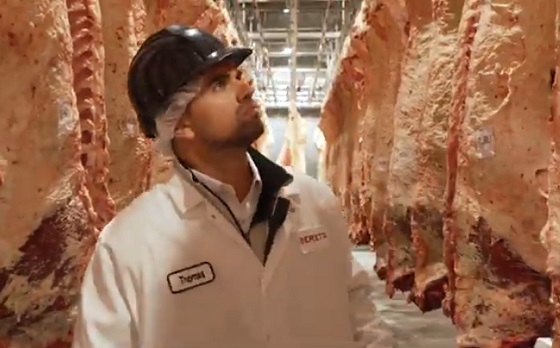
Alberta’s government continues to attract investment and grow the provincial economy.
The province’s inviting and tax-friendly business environment, and abundant agricultural resources, make it one of North America’s best places to do business. In addition, the Agri-Processing Investment Tax Credit helps attract investment that will further diversify Alberta’s agriculture industry.
Beretta Farms is the most recent company to qualify for the tax credit by expanding its existing facility with the potential to significantly increase production capacity. It invested more than $10.9 million in the project that is expected to increase the plant’s processing capacity from 29,583 to 44,688 head of cattle per year. Eleven new employees were hired after the expansion and the company plans to hire ten more. Through the Agri-Processing Investment Tax Credit, Alberta’s government has issued Beretta Farms a tax credit of $1,228,735.
“The Agri-Processing Investment Tax Credit is building on Alberta’s existing competitive advantages for agri-food companies and the primary producers that supply them. This facility expansion will allow Beretta Farms to increase production capacity, which means more Alberta beef across the country, and around the world.”
“This expansion by Beretta Farms is great news for Lacombe and central Alberta. It not only supports local job creation and economic growth but also strengthens Alberta’s global reputation for producing high-quality meat products. I’m proud to see our government supporting agricultural innovation and investment right here in our community.”
The tax credit provides a 12 per cent non-refundable, non-transferable tax credit when businesses invest $10 million or more in a project to build or expand a value-added agri-processing facility in Alberta. The program is open to any food manufacturers and bio processors that add value to commodities like grains or meat or turn agricultural byproducts into new consumer or industrial goods.
Beretta Farms’ facility in Lacombe is a federally registered, European Union-approved harvesting and meat processing facility specializing in the slaughter, processing, packaging and distribution of Canadian and United States cattle and bison meat products to 87 countries worldwide.
“Our recent plant expansion project at our facility in Lacombe has allowed us to increase our processing capacities and add more job opportunities in the central Alberta area. With the support and recognition from the Government of Alberta’s tax credit program, we feel we are in a better position to continue our success and have the confidence to grow our meat brands into the future.”
Alberta’s agri-processing sector is the second-largest manufacturing industry in the province and meat processing plays an important role in the sector, generating millions in annual economic impact and creating thousands of jobs. Alberta continues to be an attractive place for agricultural investment due to its agricultural resources, one of the lowest tax rates in North America, a business-friendly environment and a robust transportation network to connect with international markets.
Quick facts
- Since 2023, there are 16 applicants to the Agri-Processing Investment Tax Credit for projects worth about $1.6 billion total in new investment in Alberta’s agri-processing sector.
- To date, 13 projects have received conditional approval under the program.
- Each applicant must submit progress reports, then apply for a tax credit certificate when the project is complete.
- Beretta Farms has expanded the Lacombe facility by 10,000 square feet to include new warehousing, cooler space and an office building.
- This project has the potential to increase production capacity by 50 per cent, thereby facilitating entry into more European markets.
Related information
Alberta
Alberta Independence Seekers Take First Step: Citizen Initiative Application Approved, Notice of Initiative Petition Issued

Alberta’s Chief Electoral Officer, Gordon McClure, has issued a Notice of Initiative Petition.
This confirms a Citizen Initiative application has been received and the Chief Electoral Officer has determined the requirements of section 2(3) of the Citizen Initiative Act have been met.
Approved Initiative Petition Information
The approved citizen initiative application is for a policy proposal with the following proposed question:
Do you agree that Alberta should remain in Canada?
The Notice of Initiative Petition, application, and statement provided by the proponent are available on Elections Alberta’s website on the Current Initiatives Petition page.
As the application was received and approved prior to coming into force of Bill 54: Election Statutes Amendment Act, the Citizen Initiative process will follow requirements set out in the Citizen Initiative Act as of June 30, 2025.
Next Steps
- The proponent must appoint a chief financial officer within 30 days (by July 30, 2025).
- Once the 30-day publication period is complete and a chief financial officer has been appointed, Elections Alberta will:
- issue the citizen initiative petition,
- publish a notice on the Current Initiatives Petition page of our website indicating the petition has been issued, specifying the signing period dates, and the number of signatures required for a successful petition, and
- issue the citizen initiative petition signature sheets and witness affidavits. Signatures collected on other forms will not be accepted.
More information on the process, the status of the citizen initiative petition, financing rules, third party advertising rules, and frequently asked questions may be found on the Elections Alberta website.
Elections Alberta is an independent, non-partisan office of the Legislative Assembly of Alberta responsible for administering provincial elections, by-elections, and referendums.
-

 Alberta6 hours ago
Alberta6 hours agoAlberta Independence Seekers Take First Step: Citizen Initiative Application Approved, Notice of Initiative Petition Issued
-
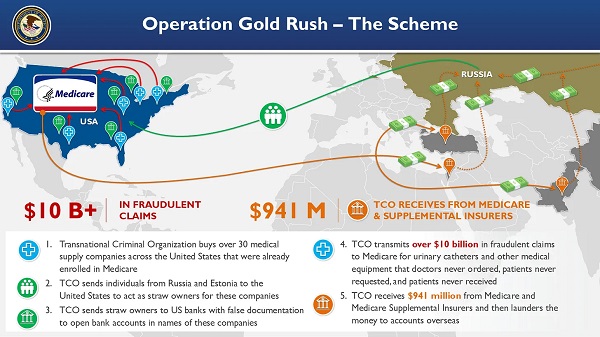
 Crime5 hours ago
Crime5 hours agoNational Health Care Fraud Takedown Results in 324 Defendants Charged in Connection with Over $14.6 Billion in Alleged Fraud
-

 Health4 hours ago
Health4 hours agoRFK Jr. Unloads Disturbing Vaccine Secrets on Tucker—And Surprises Everyone on Trump
-

 Bruce Dowbiggin7 hours ago
Bruce Dowbiggin7 hours agoThe Game That Let Canadians Forgive The Liberals — Again
-

 Agriculture2 days ago
Agriculture2 days agoCanada’s supply management system is failing consumers
-
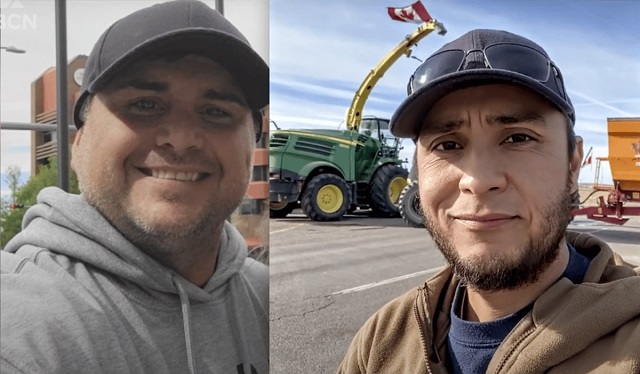
 Alberta1 day ago
Alberta1 day agoCOVID mandates protester in Canada released on bail after over 2 years in jail
-
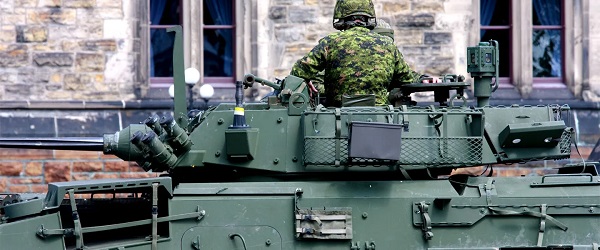
 armed forces24 hours ago
armed forces24 hours agoCanada’s Military Can’t Be Fixed With Cash Alone
-
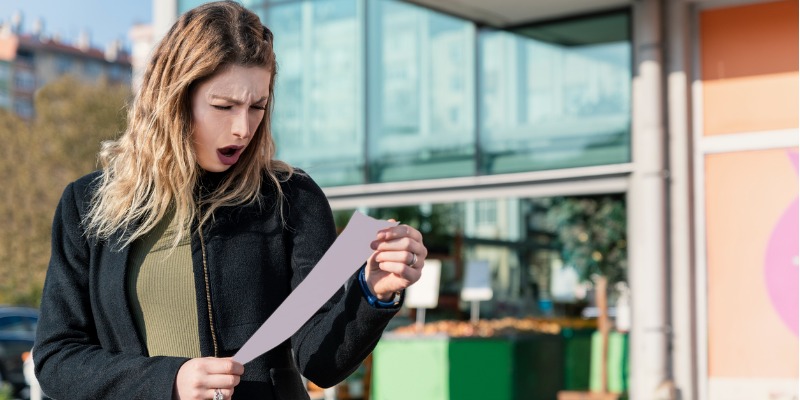
 Business1 day ago
Business1 day agoCanada’s loyalty to globalism is bleeding our economy dry






